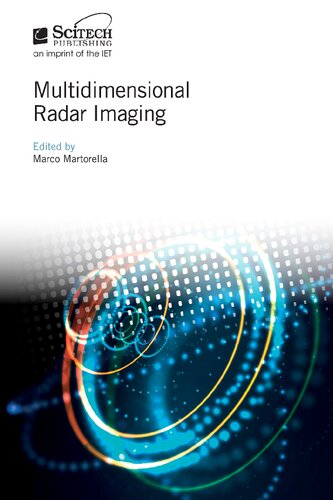

Most ebook files are in PDF format, so you can easily read them using various software such as Foxit Reader or directly on the Google Chrome browser.
Some ebook files are released by publishers in other formats such as .awz, .mobi, .epub, .fb2, etc. You may need to install specific software to read these formats on mobile/PC, such as Calibre.
Please read the tutorial at this link: https://ebookbell.com/faq
We offer FREE conversion to the popular formats you request; however, this may take some time. Therefore, right after payment, please email us, and we will try to provide the service as quickly as possible.
For some exceptional file formats or broken links (if any), please refrain from opening any disputes. Instead, email us first, and we will try to assist within a maximum of 6 hours.
EbookBell Team

0.0
0 reviewsSynthetic aperture radar and inverse synthetic aperture radar (SAR/ISAR) images have been largely used for monitoring small to large areas and more specifically for target recognition/identification. However, the technology has limitations due to the use of classical monostatic, single channel, single frequency and single polarization systems. To overcome these limitations, solutions have been proposed that show the benefit of using multiple frequencies, spatial channels, polarisations and perspective, in one word multi-dimensional radar imaging systems when dealing with non-cooperative targets.
Multidimensional Radar Imaging introduces a new framework within which to address the problem of radar imaging and target recognition as it jointly looks at optimising the use of multiple channels to significantly outperform classical radar imaging systems.
It has been used in the military within NATO for the last few years and the technology is now declassified.
Topics covered include three-dimensional ISAR; STAP-ISAR; wide-band multi-look passive ISAR; radar tomography; multistatic PCL-SAR; fusion of multistatic ISAR images with large angular separation; rotor blade parameter estimation with multichannel passive radar; multistatic 3D ISAR imaging of maritime targets; challenges of semi-cooperative bi/multistatic SAR using Cosmo SkyMEd as an illuminator; and lessons learnt from the NATO SET-196 RTG on multi-channel/multi-static radar imaging of non-cooperative targets.